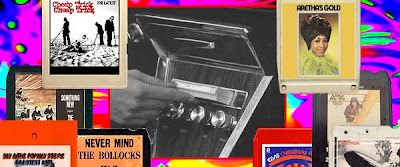Stereo 8, commonly known as the eight-track cartridge, eight-track tape, or eight-track, is a magnetic tape sound recording technology, popular from the mid-1960s to the early 1980s, primarily in the United States — it was relatively unknown in many European countries. Stereo 8 was created in 1964 by a consortium led by Bill Lear of Lear Jet Corporation, along with Ampex, Ford Motor Company, General Motors, Motorola and RCA Victor Records (RCA). It was a further development of the similar Stereo-Pak four-track cartridge created by Earl “Madman” Muntz. A later quadraphonic version of the format was announced by RCA in April 1970 and first known as Quad-8, then later changed to just Q8.
The original format for magnetic tape sound reproduction was reel-to-reel audio tape recording, first made widely available in the late 1940s. However, threading tape into the recorders was more difficult than simply putting a disc onto a phonograph player. Manufacturers introduced a succession of cartridges which held the tape inside a metal or plastic housing to eliminate handling. The first was RCA, which in 1958 introduced a cartridge system called Sound Tape or Magazine Cartridge Loading, but until the introduction of the Compact Cassette in 1963 and Stereo 8 in 1965, none was very successful.
The inside of an 8-track cartridge. The black rubber pinch roller is at upper right.
The endless loop tape cartridge was first designed in 1952 by Bernard Cousino around a single reel carrying a continuous loop of standard 1/4-inch, plastic, oxide-coated recording tape running at 3.75 in.(9.5 cm) per second. Program starts and stops were signaled by a one-inch-long metal foil that activates the track-change sensor. (Bill Lear had tried to create an endless-loop wire recorder in the 1940s, but gave up in 1946, even though endless-loop 8 mm film cartridges were already in use for him to copy from. He would be inspired by Earl Muntz’s four-track design in the early 1960s.)
Inventor George Eash, also from Toledo, invented a cartridge design in 1954, called the Fidelipac. The Eash cartridge was later licensed by manufacturers, notably the Collins Radio Corporation, which first introduced a cartridge system for broadcasting at the National Association of Broadcasters 1959 annual show. Fidelipac cartridges (nicknamed “carts” by DJs and radio engineers) were used by many radio stations for commercials, jingles, and other short items right up until the late 1990s when digital media took over. Eash later formed Fidelipac Corporation to manufacture and ma
Add a Comment


